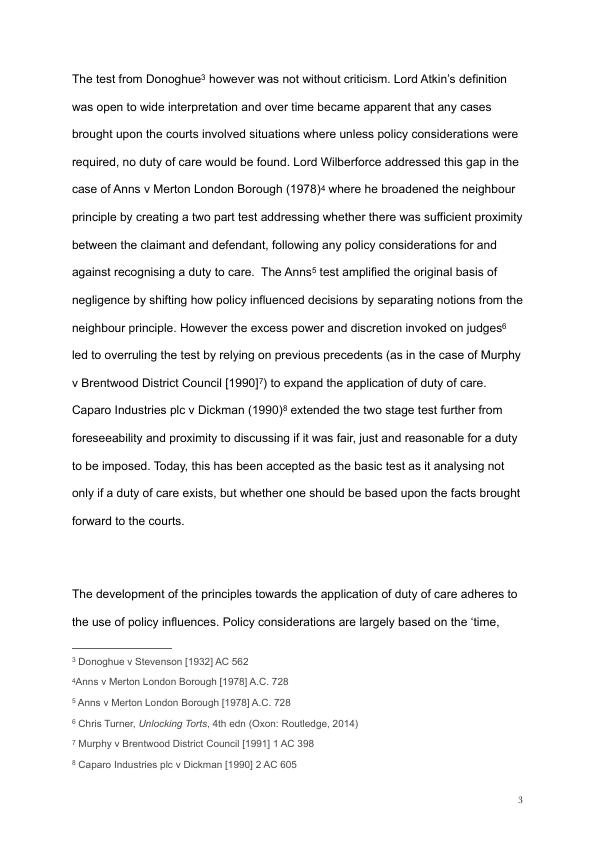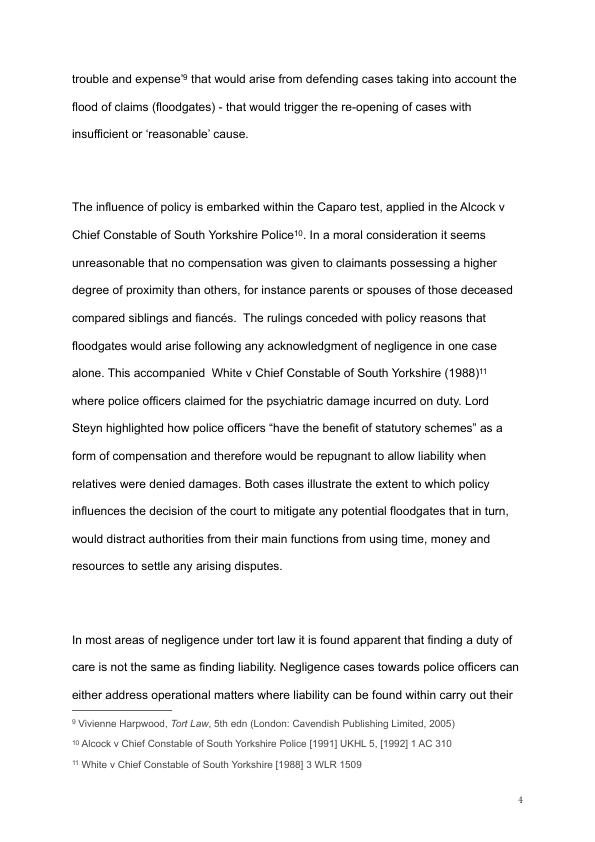Response of Courts in Denying Claims Against the Police
Critically discuss the response of the courts in denying claims against the police in actions against the police, but include discussion of the circumstances in which a duty may, in fact, be recognized. Illustrate your answer with case law; reference to scholarly articles will enhance your response.
11 Pages2891 Words184 Views
Added on 2023-04-20
About This Document
This article discusses the response of the courts in denying claims against the police and explores the circumstances in which a duty of care may be recognized. It includes case law examples and references to scholarly articles.
Response of Courts in Denying Claims Against the Police
Critically discuss the response of the courts in denying claims against the police in actions against the police, but include discussion of the circumstances in which a duty may, in fact, be recognized. Illustrate your answer with case law; reference to scholarly articles will enhance your response.
Added on 2023-04-20
ShareRelated Documents
End of preview
Want to access all the pages? Upload your documents or become a member.
Law of Torts: Rights of Gina and Samuel
|14
|3628
|192
Negligence in Tort Law: Elements, Standards, and Damages
|6
|1862
|296
Role of Foresight in the Neighbour Principle in Modern Negligence Law
|10
|3885
|439
Negligence Scenario Course 2022
|10
|2647
|9
Tort Law: Establishing Negligence and Defense of Volenti Non Fit Injuria
|9
|2482
|62
Can Susan be held liable for the loss suffered by Cliff and Mary?
|7
|2289
|116




